Menu
-
- Home
- Contact
- Search
-
Shop
- Live Feeder Insects
-
Supplies
- Habitats
- Feeders
- Feeders and Microfauna Breeding Supplies
- Bioactive Kits
- Bioactive Supplies
- Containers
- Insect Culture Cups
- Insect Culturing Cups and Lids
- Classroom Projects
- Live Air Plants bioactive
- Substrates
- Lighting and Heating
- Cages, Habitats, Bug Boxes, Vivariums, Insectariums
- Bark
- Shipping supplies, Heat packs, cold packs, containers
- Bio-Active
- Plants
- Mantis Gallery
- Usmantis Reviews
- Praying Mantis
- Mantis
- Praying Mantis eggs ootheca for pest control
- BioActive Supplies
- Beneficial Insects
- Help Videos
- Top 5 Praying mantis as pets,
- Blog
-
Shop By Family
- Praying Mantis
- Care Sheets
- Track Order
- Live Feeder Insects
- Wholesale prices for bulk orders
- FAQ
- Galleries of Mantis Videos
-
- Home
- Search
- About us
- Shipping
- Refund Policy
- Track Orders
- Contact us
- Blog
- Beneficial Insects
- Sitemap
- Reviews
-
Film production resources
- Wholesale
- FAQ
- Login
-
English

Ootheca Life Cycle Praying Mantis Egg
December 30, 2023 4 min read
The Miracle of Mantis Egg Formation
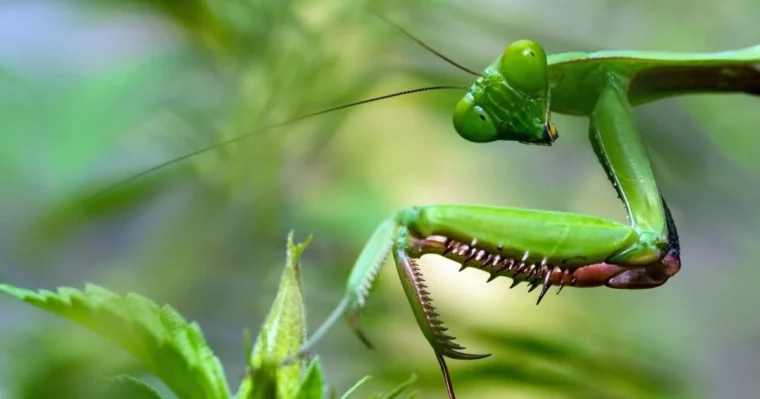
The process of mantis egg formation is a remarkable phenomenon that showcases the intricate and precise nature of nature’s reproductive mechanisms. Mantis egg structure is a testament to the meticulousness of this process.
Each individual egg, known as an ootheca, is a complex structure composed of foamy material that hardens over time to protect the developing embryos. The ootheca is carefully attached to a secure surface, such as a plant stem or a twig, through a specialized stalk. This ensures the eggs are well-protected from predators and environmental factors.
Mantis egg laying behavior is equally fascinating. The female mantis deposits a single ootheca, containing anywhere from a few dozen to several hundred eggs, during her reproductive cycle. She carefully positions the ootheca in a strategic location, maximizing the chances of survival for her offspring.
This meticulous egg formation and laying behavior exemplify the astonishing adaptations of mantises in ensuring their reproductive success.
The Inner Workings of a Praying Mantis Egg
A praying mantis egg provides a fascinating glimpse into the intricate mechanisms of embryonic development. The care and protection of the next generation is of utmost importance to these remarkable insects.
Each praying mantis egg, also known as an ootheca, is carefully constructed by the female mantis using a frothy substance that hardens into a protective casing. This casing serves as a shield against environmental factors and predators, ensuring the survival of the developing embryos within.
The ootheca is strategically attached to a secure surface, such as a plant stem or branch, using a special adhesive produced by the female mantis. This attachment provides stability and prevents the ootheca from being dislodged.
Through their meticulous egg-laying strategies, praying mantises ensure the safety and well-being of their future offspring.
The Complex Journey of Embryonic Development
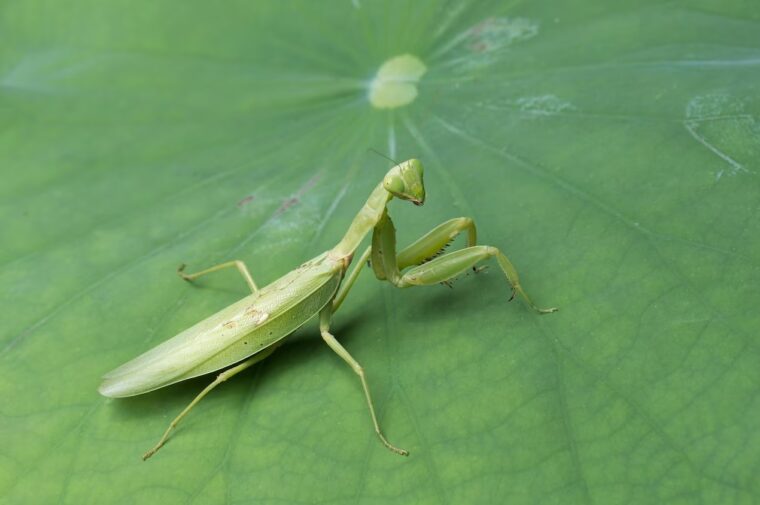
During this intricate process, the embryos within the praying mantis egg undergo a complex journey of embryonic development. Genetic factors play a crucial role in influencing this development. The DNA contained within the egg determines the growth and differentiation of cells, guiding the formation of various tissues and organs. These genetic factors determine the physical characteristics of the mantis, such as its size, shape, and coloration.
However, embryonic development is not solely determined by genetics. Environmental factors also play a significant role in shaping the journey of embryonic development. Factors such as temperature, humidity, and oxygen levels can have a profound impact on the development of the embryos. Changes in these environmental conditions can cause developmental abnormalities or even lead to the death of the embryos.
Survival Strategies Inside the Mantis Egg
Inside the mantis egg, embryos employ various survival strategies to ensure their development and eventual emergence into the world. One of the most remarkable strategies is the presence of protective adaptations. The egg case, also known as an ootheca, provides a safe and secure environment for the developing embryos. It is made of a tough, protective material that shields the eggs from predators, extreme temperatures, and desiccation. Additionally, the ootheca is camouflaged to blend with the surroundings, further reducing the risk of detection.
However, even within the safety of the egg, survival is not guaranteed. Sibling cannibalism is a common occurrence among mantis embryos. Due to the limited resources available inside the egg case, competition for food becomes fierce. In some cases, stronger embryos will cannibalize their weaker siblings, ensuring their own survival and access to vital nutrients. This phenomenon highlights the harsh reality of the natural world, where even before hatching, mantis embryos must engage in a battle for survival.
The Spectacular Hatching of Praying Mantises
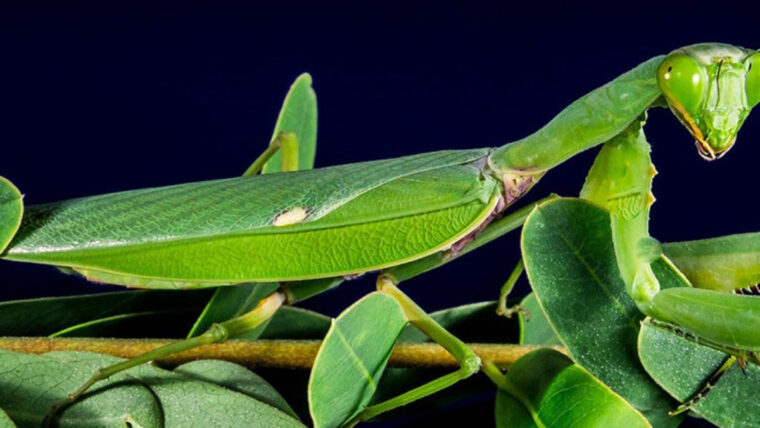
The hatching of praying mantises is a truly awe-inspiring event, captivating observers with the emergence of numerous tiny mantis nymphs from their protective egg cases. This process of metamorphosis begins when the eggs are ready to hatch, triggered by environmental cues such as temperature and humidity.
The nymphs, resembling miniature versions of their adult counterparts, carefully break open the egg cases with their sharp mandibles. As they emerge, their soft exoskeletons quickly harden, providing them with protection and support. Unlike many other insect species, praying mantises exhibit remarkable parental care, with the female laying her eggs in a frothy, protective mass called an ootheca.
She carefully attaches this ootheca to a secure surface, ensuring the safety of her offspring. This parental investment sets the stage for the spectacular hatching of praying mantises, a mesmerizing event that highlights the intricacies of their life cycle.
Frequently Asked Questions
How Long Does It Take for a Praying Mantis Egg to Hatch?
The incubation period for praying mantis eggs can vary depending on environmental conditions and species. Factors such as temperature, humidity, and availability of food can affect the hatching time, typically ranging from 3 to 6 weeks.
Can Praying Mantis Eggs Survive in Extreme Temperatures?
Praying mantis eggs have the ability to survive in a wide range of temperatures. However, extreme temperatures, especially those caused by climate change, can have a detrimental impact on their survival and development.
How Many Mantises Can Hatch From a Single Egg Case?
Praying mantises ensure fertilization of all the eggs in the egg case through a complex reproductive behavior. Factors such as genetic diversity and environmental conditions influence the number of mantises that hatch from a single egg case.
Do Praying Mantis Eggs Require Any Specific Care or Maintenance?
Praying mantis eggs require specific care and maintenance for successful incubation. Some key tips include providing a suitable environment, maintaining optimal temperature and humidity levels, and protecting the eggs from predators or adverse conditions.
What Predators Pose a Threat to Praying Mantis Eggs?
Praying mantis eggs face multiple threats from predators, which can pose a significant risk to their survival. These predators include birds, spiders, rodents, and other insects. To counter these threats, praying mantis eggs have developed various survival strategies.
Leave a comment
Comments will be approved before showing up.
Also in Praying Mantis News! Join the conversation.
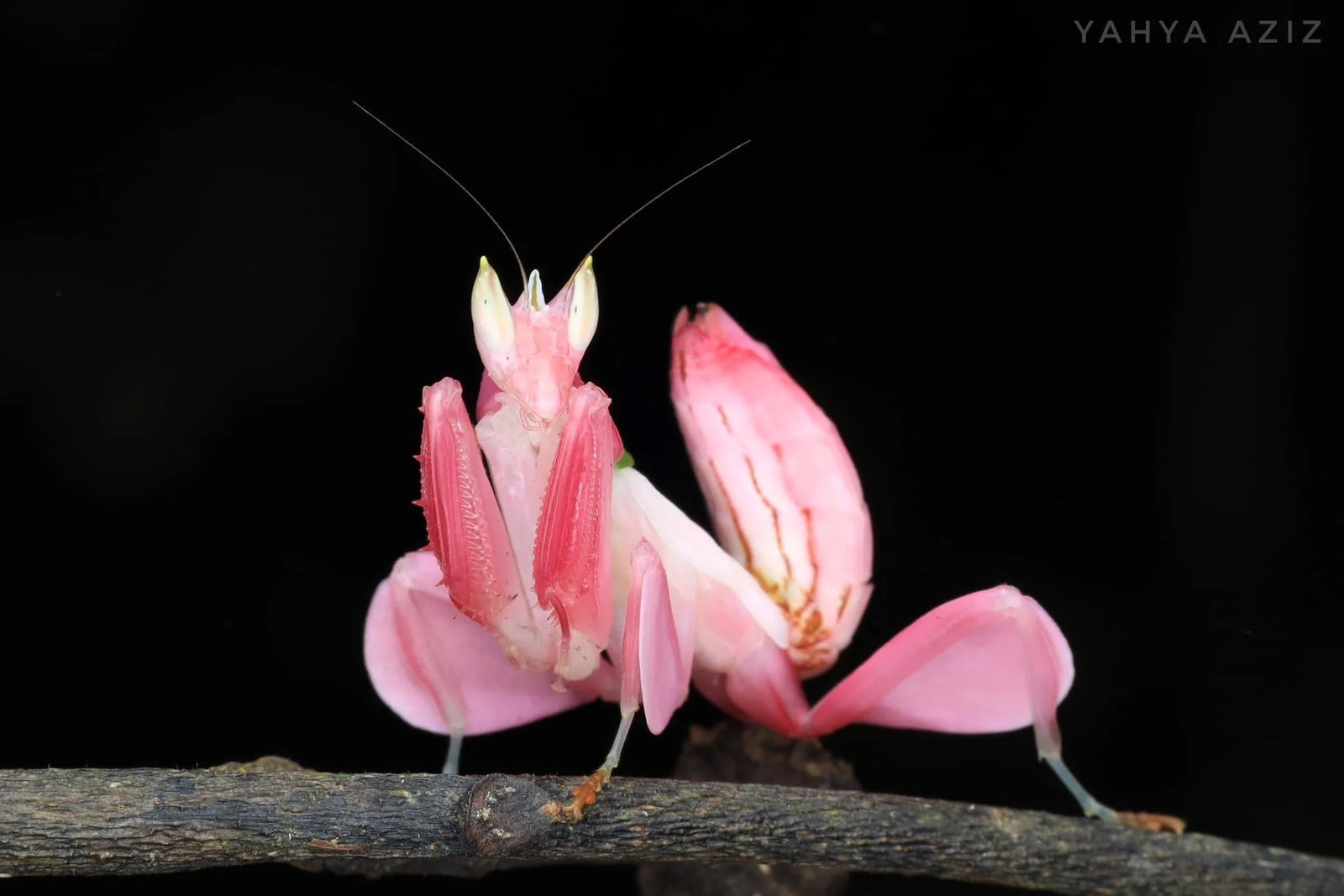
orchid mantis evolutionary research
June 06, 2025 2 min read
The orchid mantis (Hymenopus coronatus) transitions from black-and-red to pink-white coloration during development, a shift driven by the Redboy pigment transporter. This transition serves different ecological functions: red coloration helps hatchlings mimic stink bugs for predator avoidance, while the pink-white coloration of older nymphs provides floral camouflage for both predator avoidance and prey attraction. The Redboy transporter, upregulated by ecdysone, facilitates this shift by exporting red pigments in early stages and importing white pigments in later stages.
Evolutionary Basis:
Redboy's Role:
The Redboy transporter, a novel ABCG transporter, arose by gene family expansion and positive selection, specifically to handle the transition from red to white coloration, according to research on Nature.
Hormonal Regulation:
The hormone ecdysone regulates Redboy, ensuring the pigment transition happens at the appropriate developmental stage, according to research on ResearchGate.
Genetic Adaptation:
The evolutionary changes in Redboy have allowed orchid mantises to adapt their body color to different life stages and ecological niches.
Ecological Functions:
Aposematic Mimicry (Hatchlings):
The initial black-and-red coloration serves as a warning signal, mimicking the appearance of stink bugs, which are known to be distasteful or toxic to predators.
Camouflage (Older Nymphs):
The pink-white coloration provides floral camouflage, helping the mantis blend in with flowers and avoid detection by predators.
Prey Attraction:
The flower-like appearance also attracts unsuspecting prey, such as small insects, to their location, enhancing the mantis's hunting success.
In summary, the orchid mantis's body color transition is a fascinating example of ontogenetic camouflage and adaptive evolution, where the color changes throughout the mantis's life serve distinct ecological roles in where the color changes throughout the mantis's life serve distinct ecological roles in predator avoidance and prey attraction.
Read More
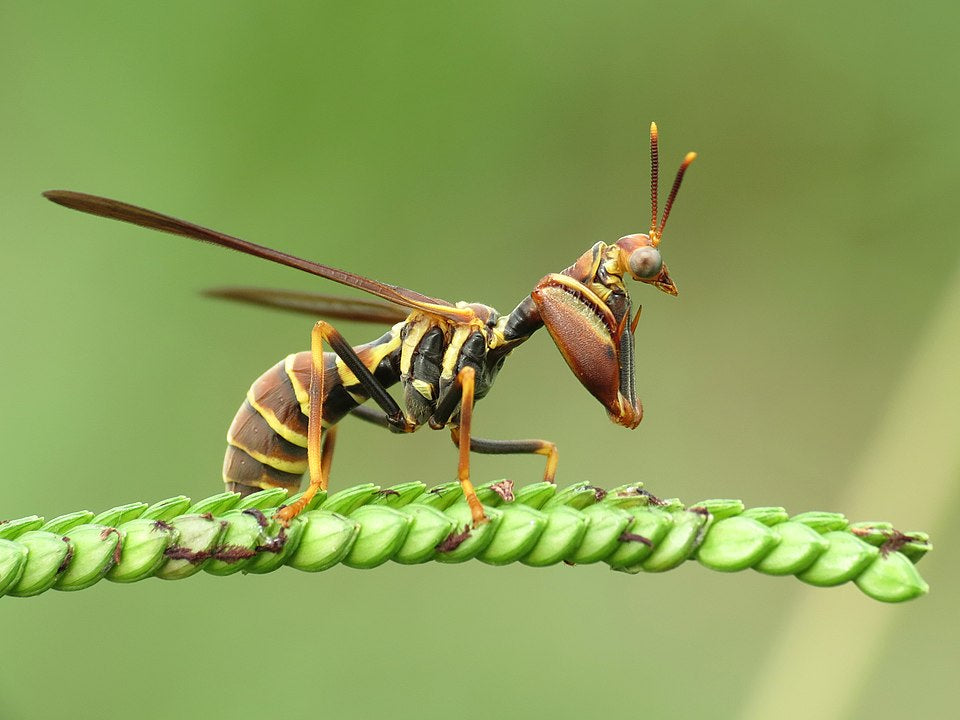
Mantis fly Mantispidae, very special insect
October 15, 2024 3 min read
Mantispidae, they don’t sting! 

Recent Articles
-
orchid mantis evolutionary research
June 06, 2025
-
New Yorker article 1955 Mantis Man
March 09, 2025
-
Mantis fly Mantispidae, very special insect
October 15, 2024
-
Do insects have feelings? Love or Hate? What’s your opinion
September 09, 2024
-
How Praying Mantises Hear: One ear
July 19, 2024
-
Identifying Domestic species
July 19, 2024
-
Invasive claims and irresponsible advice
April 13, 2024
-
Is it time for insect researchers to consider their subjects’ welfare?
April 08, 2024
-
My Awesome Summer by P. Mantis Children’s book
April 07, 2024
-
Toxodera
April 06, 2024
Categories
- animal husbandry
- best feeders
- best mantis for pest control
- breeding praying mantis
- buy praying mantis
- Cannabis
- crickets
- discussion
- dormitory pet
- Drosophila
- education
- egg
- entomology
- fertility
- flightless fruit flies
- Flower mantis
- Friendly Bugs For Cannabis
- fruit fly culture
- geometric morphometrics
- Ghost mantis
- happy experience with pets
- Hydei
- Hymenopodidae
- Hymenopus coronatus
- invasive
- keeping insects alive
- Lucky mantis
- Major League baseball Perez Kisses Lucky Mantis!
- make money
- mantis for dummies
- mantis ooth
- Mantodea
- melanogaster
- mimicry
- mismolt
- new species
- ooth
- ooth care
- ootheca
- P paradoxa
- pest
- Pest control
- pet nutrition
- praying mantis
- praying mantis care
- praying mantis for sale
- reptile feeders
- School project
- scientific research
- Sexing praying mantis
- Shipping
- signalling
- stem
- stenophylla
- Store news
- stress from shipping
- usmantis
- we buy mantis
Menu Title
This section doesn’t currently include any content. Add content to this section using the sidebar.
Subscribe
Sign up to get the latest on sales, new releases and more …
Invalid Password
Enter